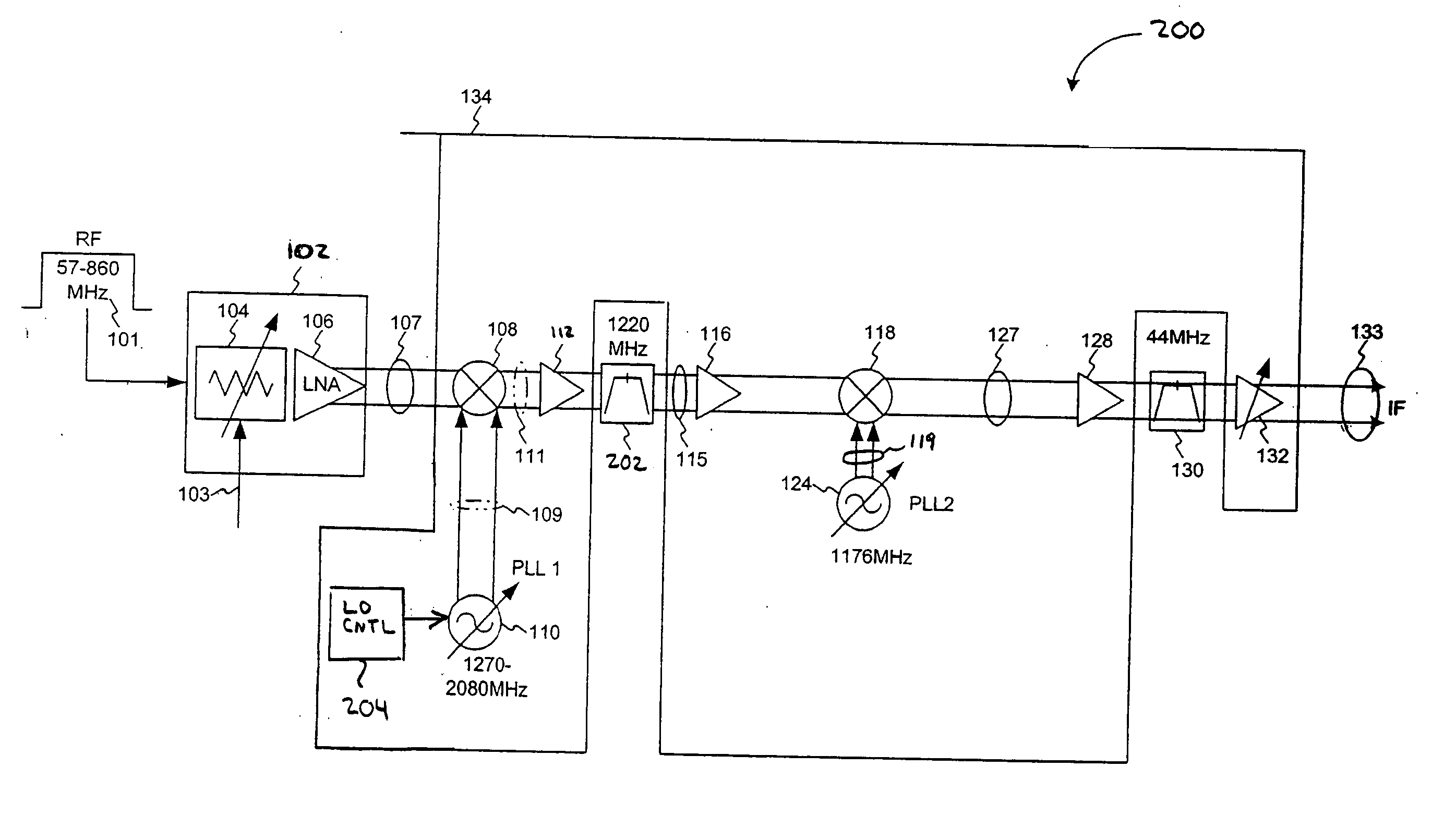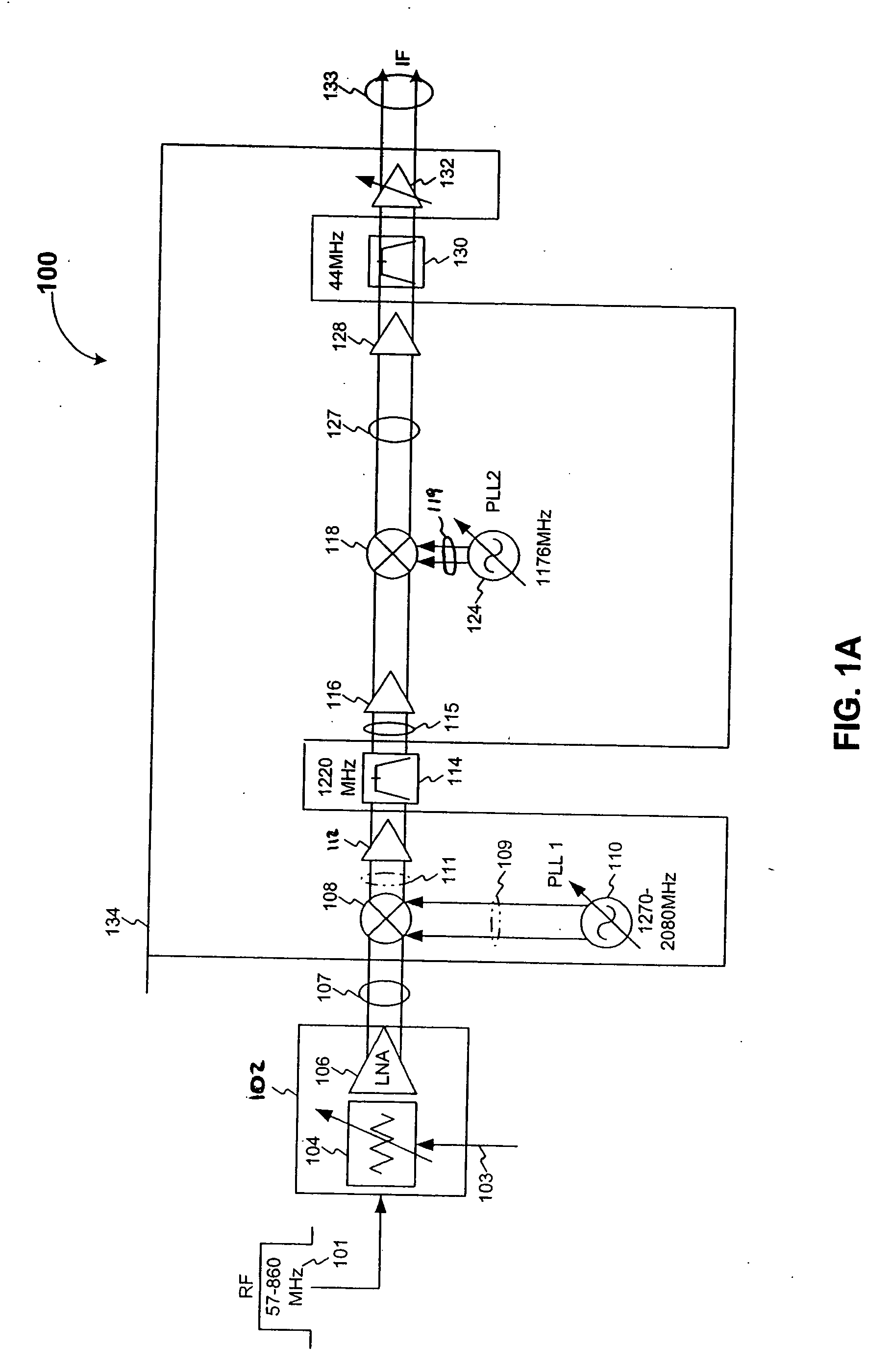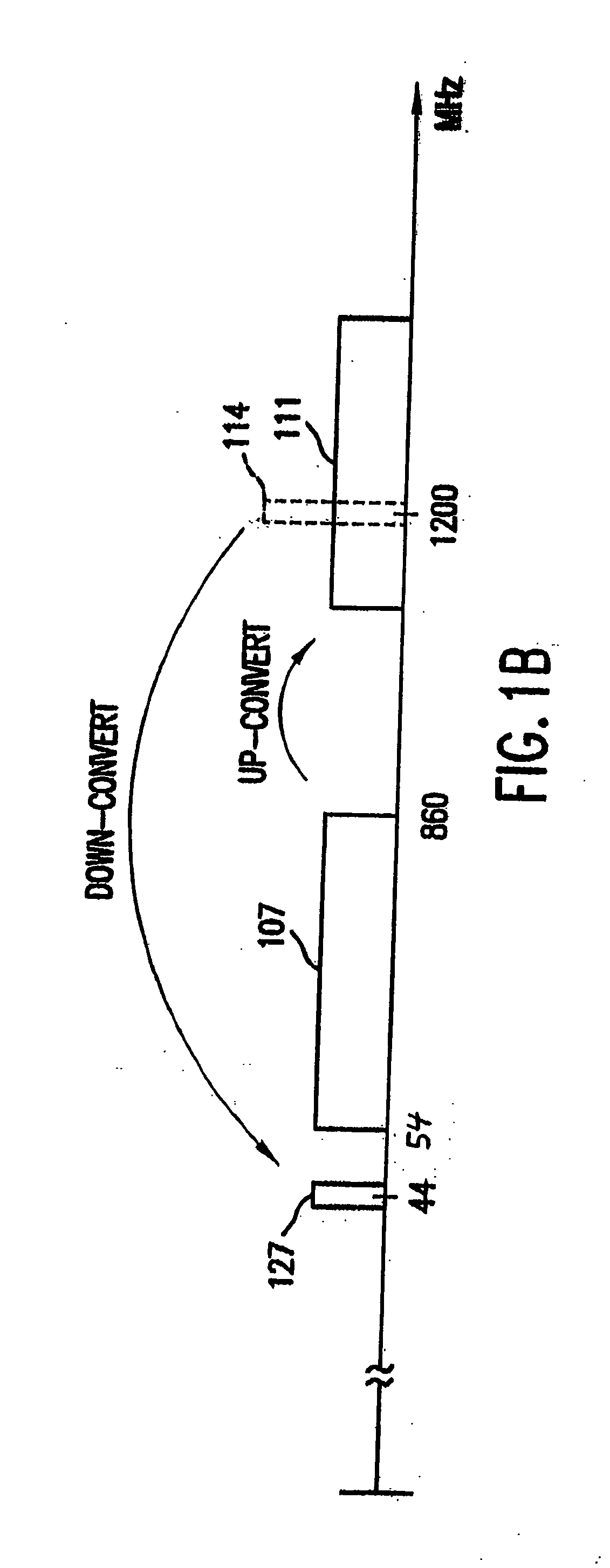Dual conversion receiver with reduced harmonic interference
a conversion receiver and harmonic interference technology, applied in the direction of radio transmission, transmission, electrical equipment, etc., can solve the problems of unwanted harmonic interference, mixing of the first and second local oscillators,
- Summary
- Abstract
- Description
- Claims
- Application Information
AI Technical Summary
Benefits of technology
Problems solved by technology
Method used
Image
Examples
Embodiment Construction
[0019]FIG. 1A illustrates a schematic of a tuner assembly 100 that has an automatic gain control circuit (AGC) 102 and a tuner 134.
[0020] The tuner assembly 100 receives an RF input signal 101 having multiple channels and down-converts a selected channel to an IF frequency, to produce an IF signal 133. For instance, the RF input signal 101 can include multiple TV channels that typically have 6 MHZ frequency spacings and cover a range of 54-860 MHZ, and where the selected channel is down-converted to an IF frequency at 44 MHZ, 36 MHZ or some other desired IF frequency for further processing. The frequencies listed herein are not meant as a limitation and are provided for example purposes only. The structure and operation of the tuner assembly 100 are described in further detail below.
[0021] The AGC circuit 102 provides automatic gain control using a variable resistor104 and a low noise amplifier (LNA) 106. The variable resistor 104 attenuates the RF input signal 101 according to a ...
PUM
 Login to View More
Login to View More Abstract
Description
Claims
Application Information
 Login to View More
Login to View More - R&D
- Intellectual Property
- Life Sciences
- Materials
- Tech Scout
- Unparalleled Data Quality
- Higher Quality Content
- 60% Fewer Hallucinations
Browse by: Latest US Patents, China's latest patents, Technical Efficacy Thesaurus, Application Domain, Technology Topic, Popular Technical Reports.
© 2025 PatSnap. All rights reserved.Legal|Privacy policy|Modern Slavery Act Transparency Statement|Sitemap|About US| Contact US: help@patsnap.com



